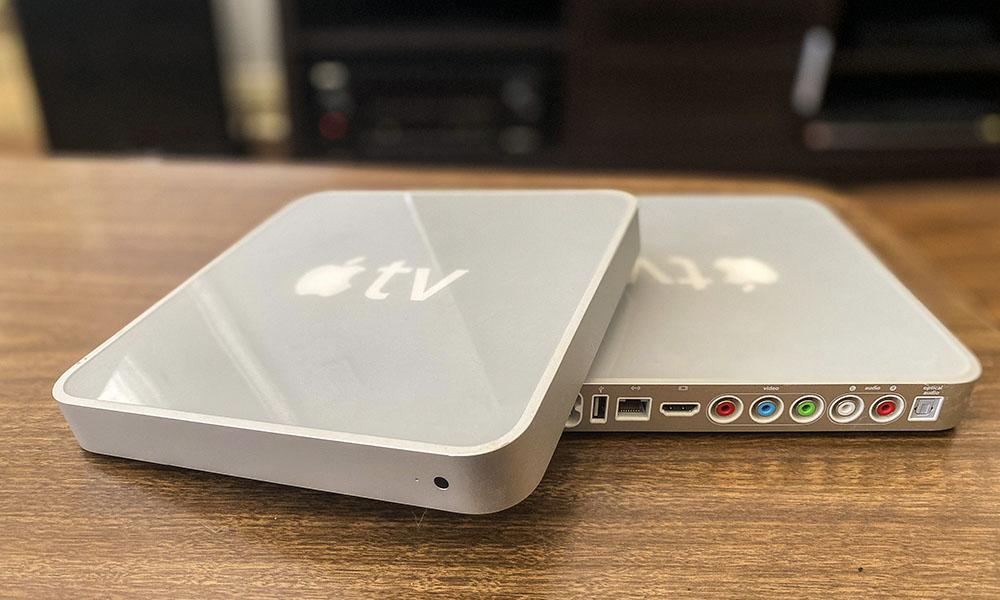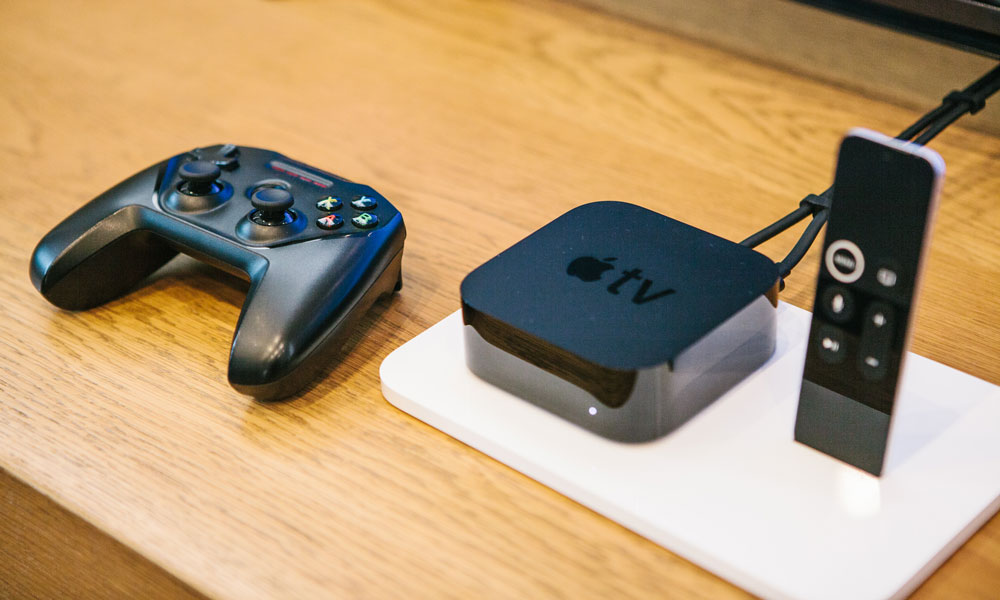All-New Apple TV with FaceTime Camera and HomePod Speaker Might Be in the Works
 Credit: Philip Goolkasian / Behance
Credit: Philip Goolkasian / Behance
Toggle Dark Mode
It’s been somewhat hard to figure out exactly what Apple has been up to with its Apple TV set-top box over the past couple of years, and in fact we’d venture a guess that even Apple itself hasn’t always been clear on this one. However, now it looks like the next-generation Apple TV could herald a massive shift in Apple’s ambitions for the home ecosystem.
Apple’s foray into set-top boxes began over 14 years ago, when the company announced the first-generation Apple TV on January 9, 2007 — at the same legendary event where Steve Jobs famously unveiled the original iPhone.
However, most folks can be forgiven for their failure to remember the first iteration of Apple’s set-top box, as it was astonishingly different from what came later.
While the Apple TV has actually gone through three different design phases, the original contrasted most starkly with the small black boxes that have since become synonymous with the Apple TV brand.
The original Apple TV actually had more in common with the iPod and the Mac mini in both application and design, sporting a 40GB hard drive (a later refresh would add a 160GB version) and the need to sync or stream all of your content from an iTunes library on your Mac or PC.
The first version offered no internet streaming capabilities at all, and although later updates added YouTube, it wouldn’t be until Apple completely redesigned the Apple TV in 2010 that actual streaming services like Netflix would be added to the mix.
To be fair, of course, when the original Apple TV debuted, the streaming services we know today were in their nascent stages at best; even Netflix was still primarily in the business of renting out DVDs by mail.
By 2010, however, Apple had all but abandoned the original Mac mini-sized set-top box, shifting into a primarily internet-connected, rather than iTunes-connected, approach. Still, Apple continued to consider the Apple TV product family nothing more than a “hobby,” and the second- and third-generation models were limited to only those apps that Apple chose to bundle in as part of Apple TV Software Updates. Even though they used Apple’s A5 chip (the original Apple TV actually packed in an Intel Pentium M CPU), Apple stuck with an embedded operating system that wasn’t particularly versatile.
The next major shift for Apple’s living room strategy came in 2015, when the fourth-generation Apple TV introduced an entire app ecosystem. The new Apple TV retained the same basic design as its predecessor, sharing the same footprint and simply gaining some additional height, but the insides of the device represented a whole new ballgame.
The fourth-generation Apple TV joined Apple’s iPhone and iPad in offering an iOS-style operating system — in this case dubbed tvOS — and joining the App Store. Existing iPhone and iPad apps could easily be expanded by their developers to work on the set-top box, adding an entirely new dimension to the App ecosystem.
Apple updated this with a fifth-generation Apple TV in 2017, which added a faster A10X Fusion CPU and 4K HDR support, but little else. The 2015 Apple TV continued being sold as the “Apple TV HD” while the newest model was the “Apple TV 4K.”
Since then, we’ve heard lots of suggestions for what Apple might do with its set-top box, but each time we expect the company to unveil even a modest refresh… crickets.
Another Sea Change on the Horizon?
With such a checkered past for the set-top box, it shouldn’t come as a big surprise that Apple is planning yet another big shift that will likely take the Apple TV in an entirely different direction.
According to Bloomberg’s Mark Gurman, Apple is looking to build a product that will expand the Apple TV far beyond its roots as a set-top box. Instead, it sounds like Apple wants to basically build the ultimate smart home hub, combining the features of the Apple TV with the HomePod, and beyond.
For instance, Gurman notes that Apple is considering adding a camera for video conferencing through a connected TV — a feature that many have been speculating about since Apple first debuted FaceTime over ten years ago. It would also include other smart-home functions, according to Gurman’s sources, although it’s not entirely clear at this point what those would be.
All the usual Apple TV features would be there, such as watching video and gaming, plus the HomePod features like hands-free “Hey Siri” support and of course music streaming.
If launched, it would represent Apple’s most ambitious smart-home hardware offering to date.
Mark Gurman
Gurman is also doubling down on a previous report that Apple is working on a touchscreen HomePod, designed to compete with similar products by Google and Amazon. He describes it as essentially an “iPad with a HomePod speaker” that would also include a camera for FaceTime and other video chat apps.
In something that sounds a bit crazy to visualize, he also says Apple has at least considered using a “robotic arm” to hold the iPad and move to follow the user around the room as they talk. While that sounds a bit Frankensteinian, the actual product would probably be more akin to Amazon’s latest Echo Show.
At this point, however, both products are said to be in the very early stages, and it’s not even a guarantee that they’ll ever see the light of day.
Gurman’s report also doesn’t entirely rule out the possibility of Apple still releasing a more traditional Apple TV, at least in the interim. However, the fact that Apple has combined its Apple TV and HomePod divisions, and shifted the HomePod operating system over to tvOS definitely leaves the writing on the wall for more integrated hardware that combines the capabilities of both devices.
That said, there are still reports suggesting that a powerful new Apple TV could be coming sooner than the timeline for this more revolutionary version. There’s also been strong evidence that it’s going to be a more game-centric device, which begs the question whether Apple is now pursuing the living room strategy from more than one angle.
While Apple clearly prefers to keep its product lines as simple as possible, the Amazon Echo and Google Nest product lineups show there’s definitely room for multiple classes and tiers of home automation set-top boxes, hubs, and smart speakers, and if the Apple TV is going to survive in the modern smart home, it’s definitely going to have to become much more than it is today.
[The information provided in this article has NOT been confirmed by Apple and may be speculation. Provided details may not be factual. Take all rumors, tech or otherwise, with a grain of salt.]








